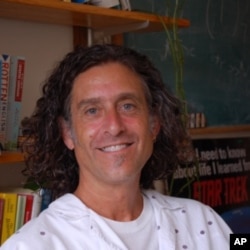Everyone speaks English a little differently, especially if it is not your first language. It was these unique nuances of non-native English speakers which inspired linguistics professor Steven Weinberger to create the Speech Accent Archive at George Mason University.
Although it was designed to prepare students for a career teaching English as a second language, the archive gets a million hits a month from an audience with diverse needs.
“We get notices from speech pathologists, from computational engineers who do speech processing," says Weinberger, "from PHD students who want to do research on bias and accent judgments, from actors who need to learn a special part.”
Estimates for the number of native English-speakers worldwide range from about 300 million to over 400 million. Millions more speak English as a second language. Where each speaker learned the language, and at what age, can make a difference in how it sounds. Those differences are what can be heard online at the Speech Accent Archive.
There are 1,500 recordings in the archive. The speakers come from countries across the globe, places like the United States, England and Australia, where English is the primary language. And places like China, Iraq and Eritrea, where it is not.
Weinberger says the students in his introductory English phonetics class are mostly interested in teaching English as a second language. They wanted to study how non-native speakers pronounce different sounds.
“So we sent the students out to record non-native speakers, and we compared those speakers to each other and to native speakers of English.”
To make it easier to compare the different speakers, Weinberger designed a 69-word paragraph for everyone to read:
“Please call Stella. Ask her to bring these things with her from the store: Six spoons of fresh snow peas, five thick slabs of blue cheese, and maybe a snack for her brother Bob. We also need a small plastic snake and a big toy frog for the kids. She can scoop these things into three red bags, and we will go meet her Wednesday at the train station.”
“It had practically every English sound," Weinberger says, "but not all of them, and it had some very difficult, for non-native speakers at least, difficult clusters of consonants.”
In 1999, he put both the paragraph and the samples that the students had recorded on the web.
Weinberger says some researchers have criticized the absence of naturalistic, spontaneous speech. He acknowledges the point, but says having everyone read the same words, has advantages as well as disadvantages.
“The biggest plus of course is that it is so uniform that you can immediately compare a Kiswahili speaker to a native English speaker." But he admits that "a less than skilled reader will have difficulties with the paragraph that might not demonstrate their true phonetic abilities.”
Visitors to the site can browse by geographical map or by native language. They can do specific searches based on a number of parameters including gender, place of birth, age English learning began, and general characterizations of speech, such as adding a consonant or vowel.
The site also invites people to send in their own recording of the paragraph.
“Right now we only have samples from about 350 languages, including English," he says. "There are 6,000 languages in the world today, so we need lots more. That’s why the archive work will never be finished.”
Weinberger says they have just finished beta testing a new tool to help with that work- an app that will allow people to record and submit their sample from their iPhone.








